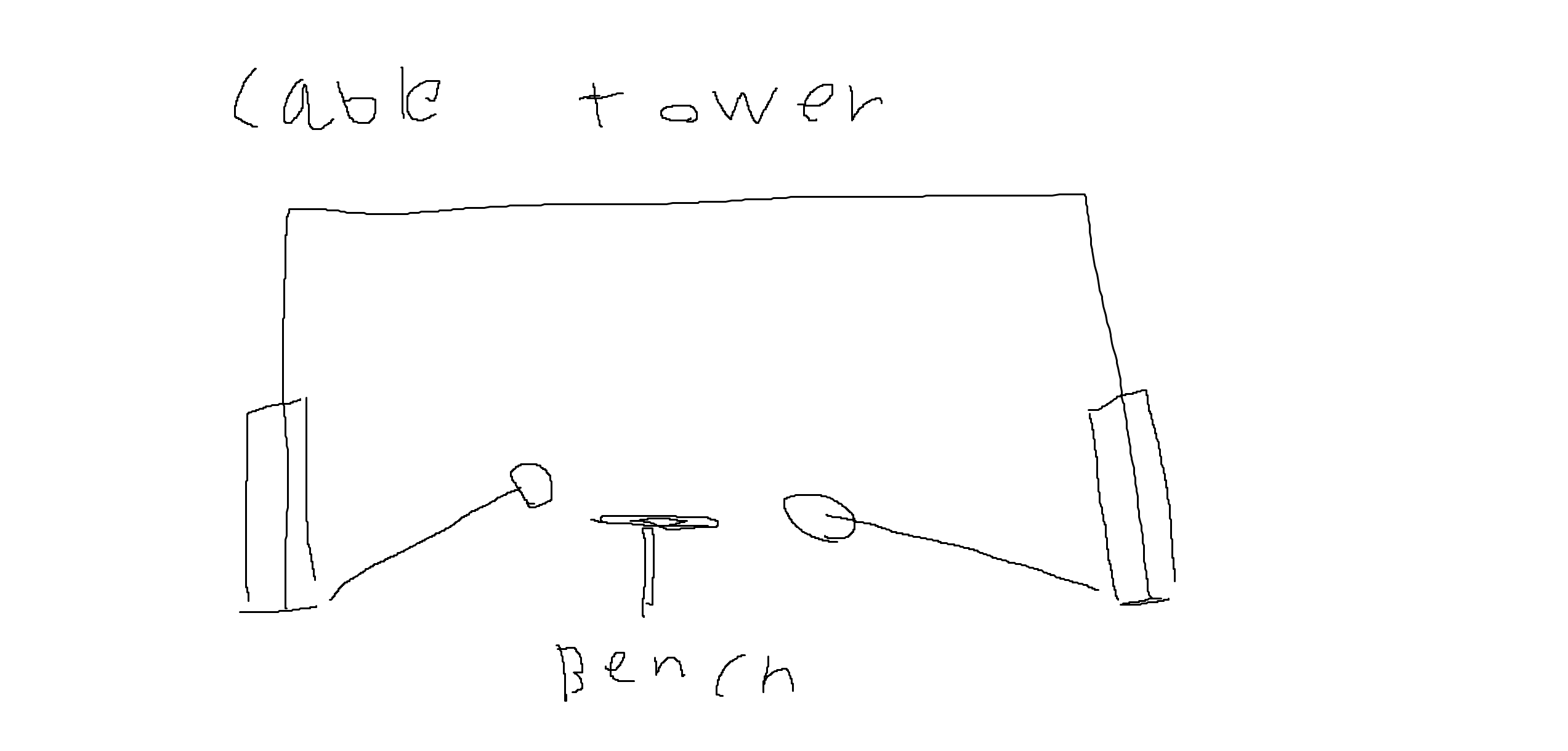Insomnia
- Joined
- Sep 2, 2023
- Posts
- 12,187
- Reputation
- 35,888
This guide will teach you the most optimal way to get jacked so you don’t lose time in the gym
This guide is based on the latest science, some things may change in the future.
CHAPTER 1.
•Why do muscles grow?
The main driver of muscle hypertrophy is no other than Mechanical tension. A really common myth is that the main driver of hypertrophy are microtears, which is in fact wrong. Muscle damage exists but that does not generate hypertrophy.
What is Mechanical Tension?
•well it’s not exactly a simple process but I will simplify it :
Mechanical tension = muscle fibers being pulled on while they’re working.
•When you lift a weight, your muscle fibers contract (shorten) while resisting the load
CHAPTER 2.
•what is the best split?
There are 2 things that matter in a split :
-frequency: the amount of times you train
X muscle group per week
-Volume:how many sets you are doing per
Muscle group
I recommend a higher frequency lower volume split, why?
1. Muscle atrophy begins ~48 hours post workout
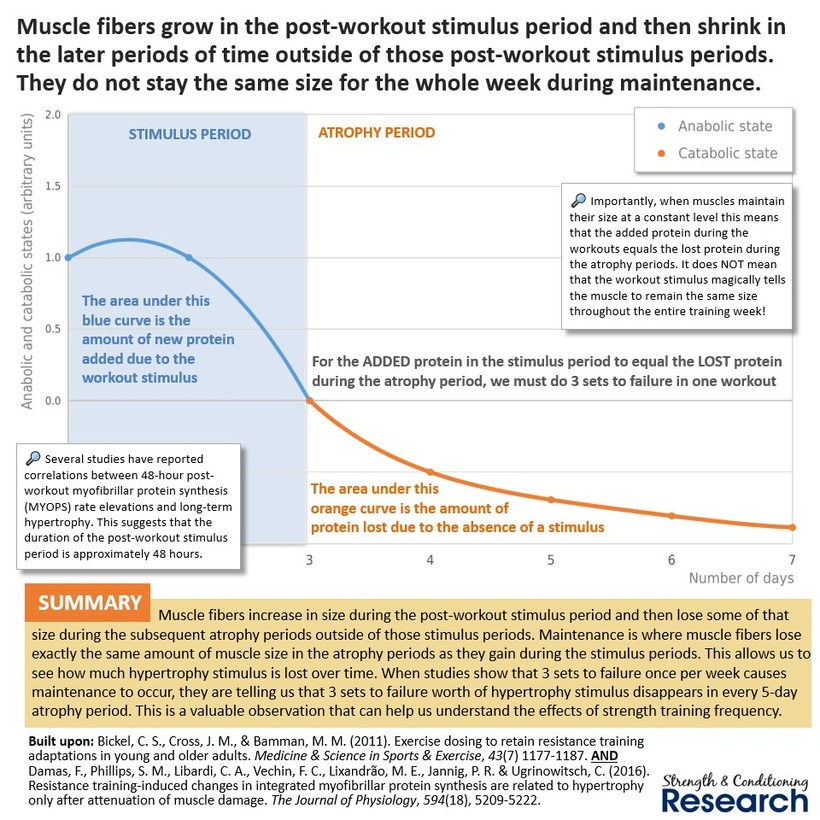
By training a muscle group every
2. The most stimulating sets are the first 2

Having higher frequency essentially means you will benefit from the first sets more often than someone on a bro split (1x frequency) who benefits from them once a week
So? What’s the ,,best split”
There is no ,,best split” as long as you do a split
Like fbeod (full body everyother day) upper lower 3 times a week, anterior posterior or torso limbs as you will have good frequency
When doing a split with higher frequency you should do way lower volume as you need to recover ( more sets harder to recover because of muscle damage) preferably 2 sets for muscle group per sesh (if you can do 3 or 4 sets and recover do that)
How do you know if you are recovered?
if you progress that session that means you ve recovered from last ses ( experienced gym goers will progress less often [once every 1-2 weeks] while new gym goers might progress every session)
CHAPTER 3
• How to get a massive back
Getting a huge back only requires only 3 exercises
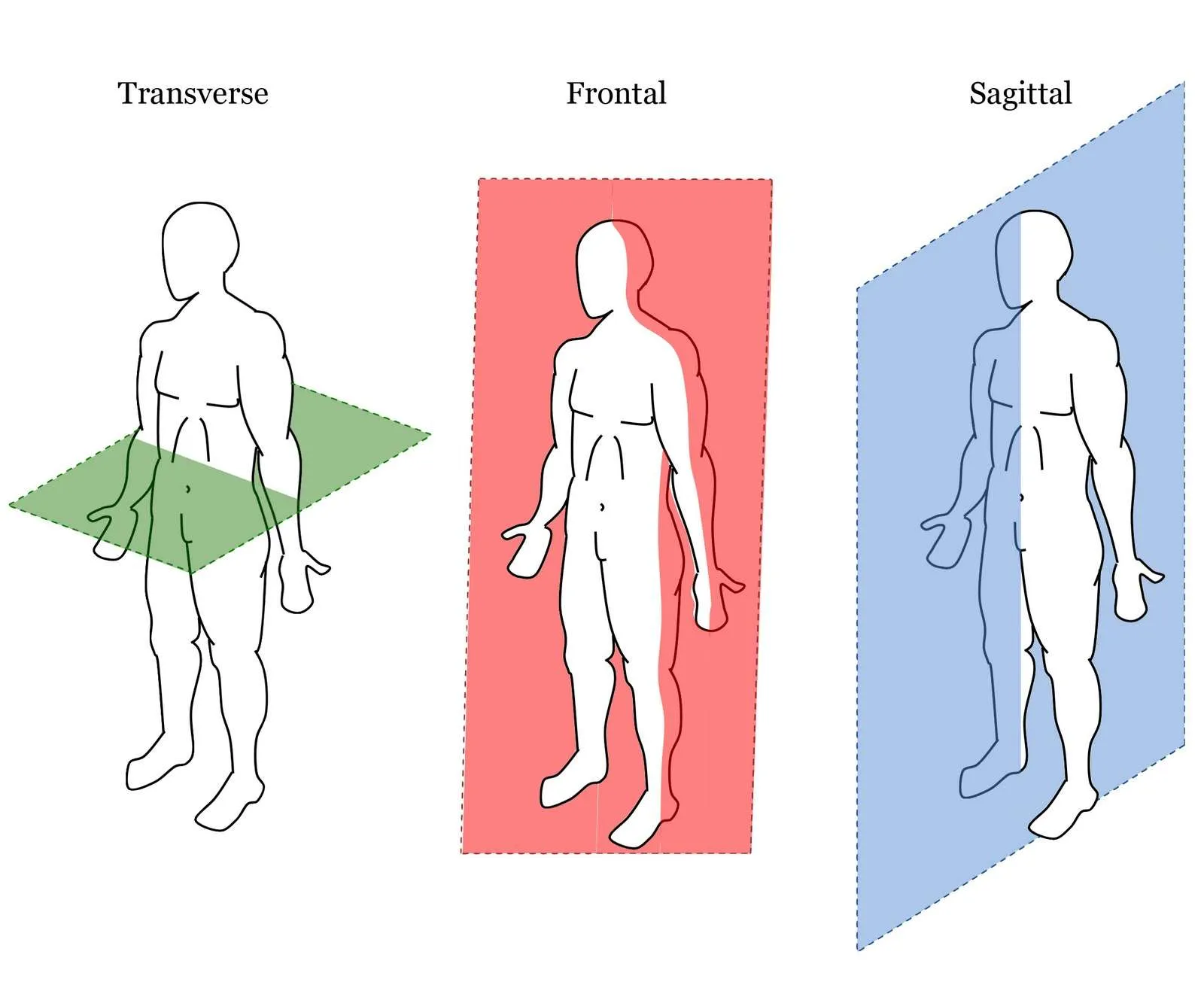
What are you looking at?
You need a back exercise for each of these planes
• Sagital-work the upper regions of the lattisimus dorsi (lats)
•Frontal-works the lombar region of the lats (lower lats)
• transverse-works your upper back and rear delts
For the sagital plane any chest supported row works, or if you want an isolation exercise you can try a keenan flap in the sagital plane

It consists of setting a bench near the cables and cuffing at the humerus (bone that’s under the bicep and tri) doing that removes your bicep and forearms from the exercises.
,,but won’t the exercise be better if it works more muscle groups?”
Answer is No, an isolation exercise will always be better for said muscle group because you will have better MUR( motor unit recruitment for that said muscle group)
Think about it this way, an exercise cannot be 100% biceps 100% lats 100%spinal erectors. It will be 70% this 70% that etc.
For the Frontal plane you can do:
-a wide grip pulldown ( make sure to not go all the way to the top, as the chest has best leverage there)
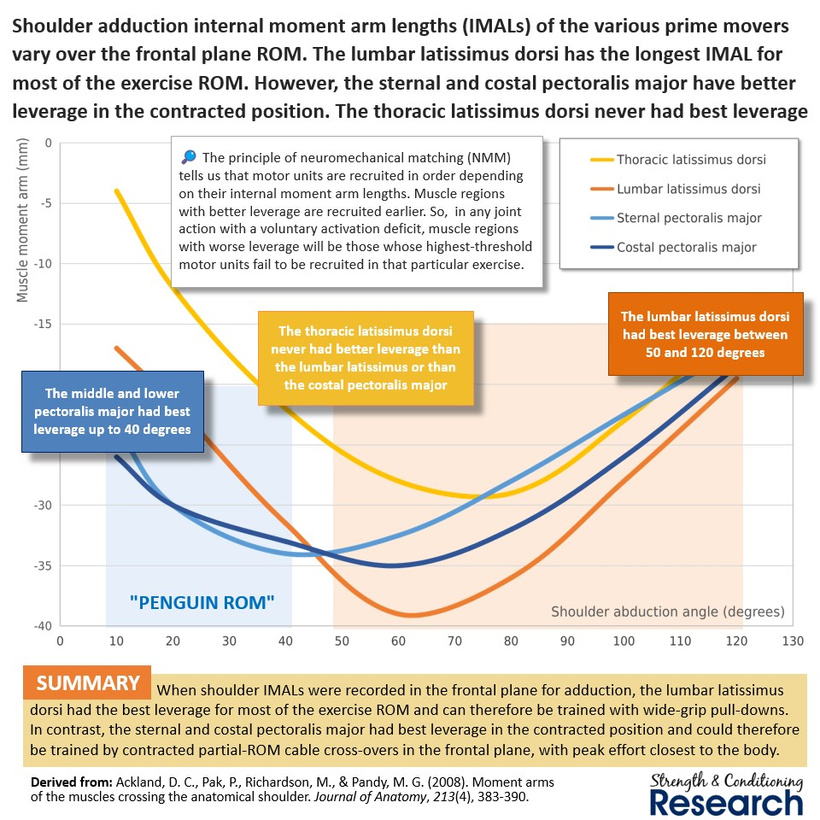
Lower pecs have best leverage between 180-120 degrees and 40-0 degrees. So that in the 120-40 degree range.
If you want an isolation exercise you can again, do a keenan flap except in the frontal plane this time
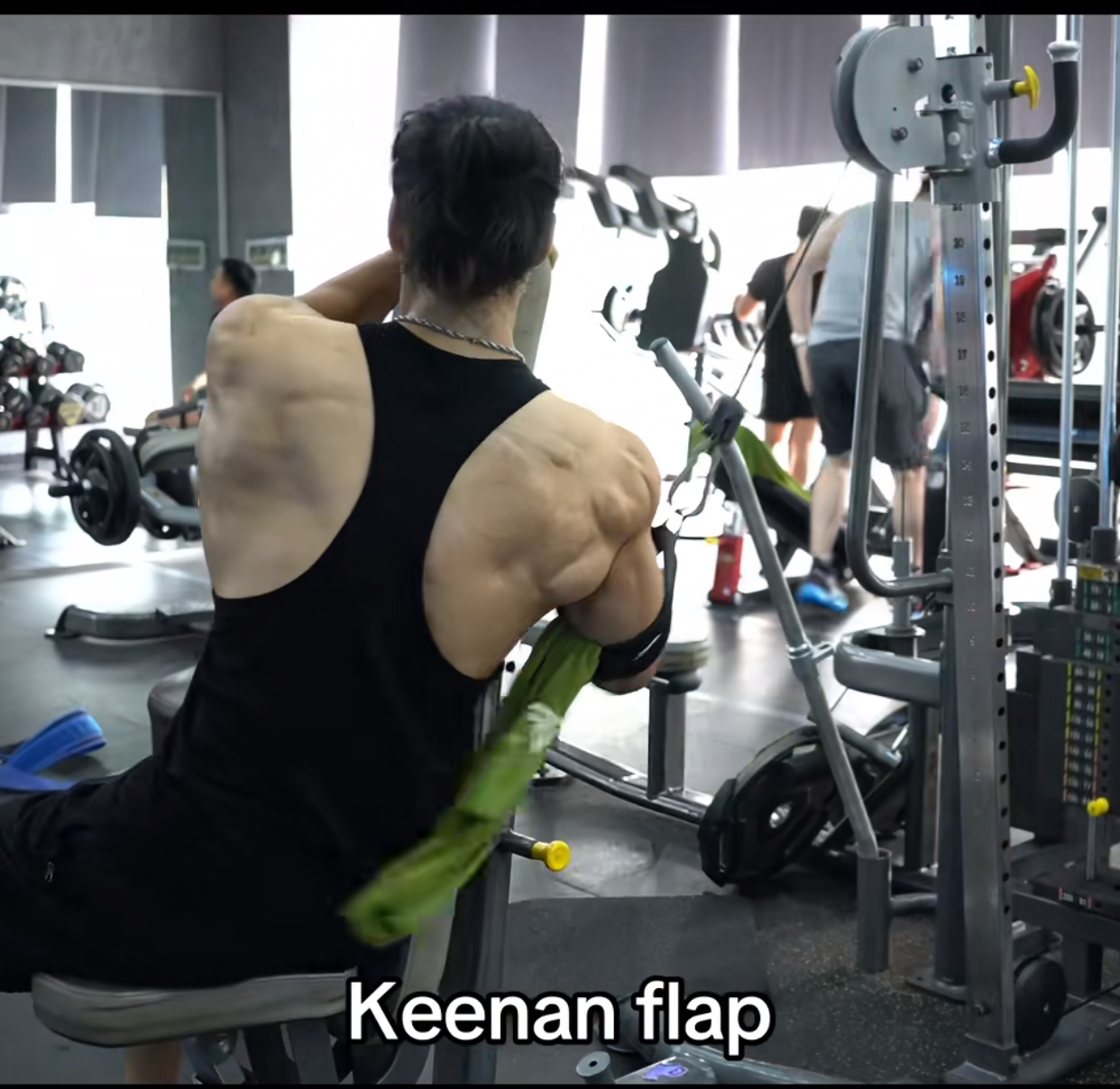
Make sure to put the cuff on your humerus
Lastly but not least, transverse plane:
You can either do:
-a row with your arms flared out
-a Kelso shrug
A Kelso shrug is just pure scapular retraction
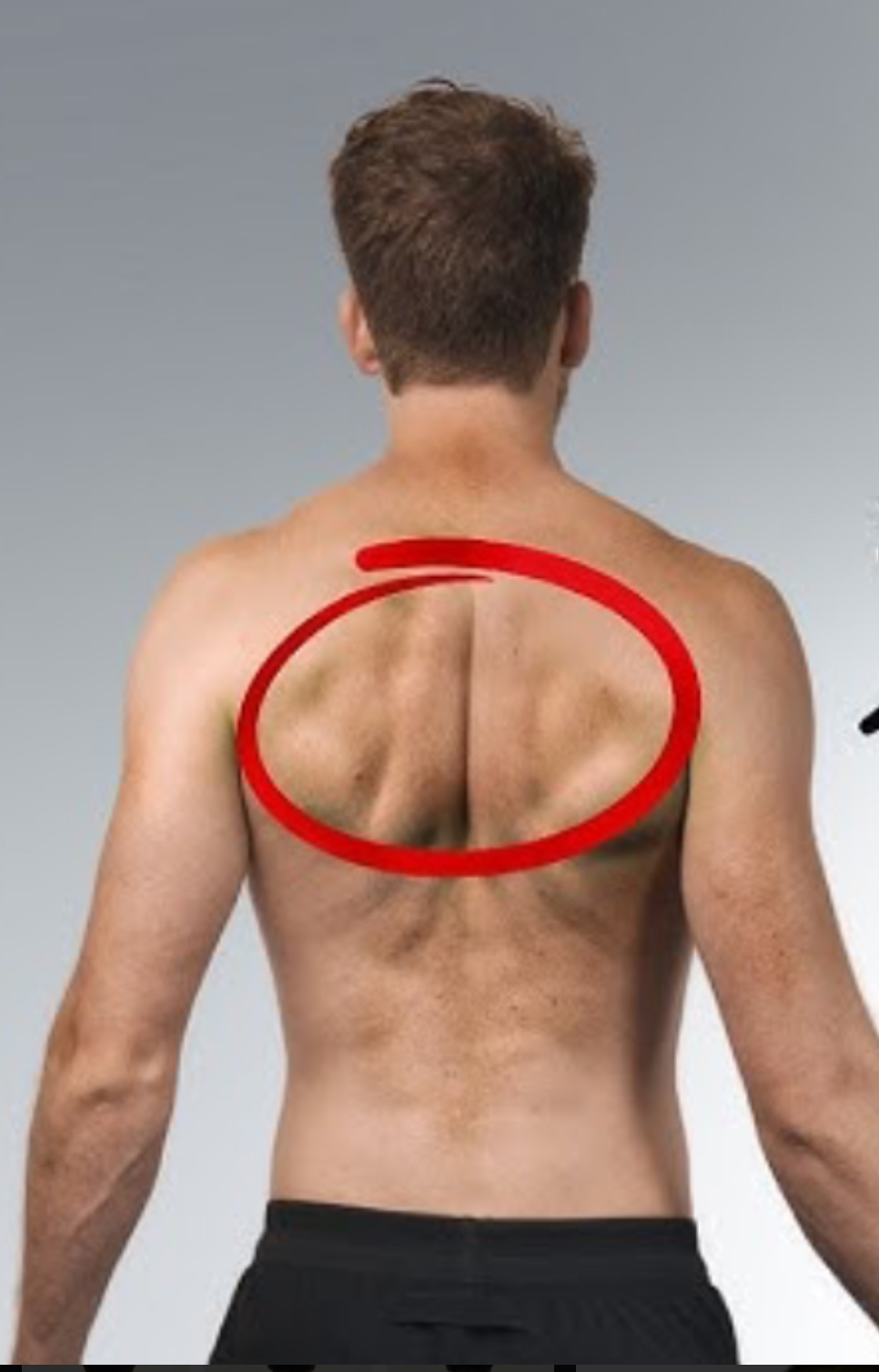
Think about it like bringing your shoulder blades togheter with your arms straight. Try to do a wide grip row without moving your arms, that’s pretty much what a Kelso shrug is
Chapter 4
You’re overcomplicating brah
Your chest training
The chest’s main function is horizontal adduction, which is what you perform when doing bench press or pec deck(fly)
Horizontal adduction trains the whole pec, but it does have other functions such as shoulder flexion/ extension and frontal adduction between 40 degrees and 0.
You really need 1-2 exercises for your chest:
-A pec deck/pressing movement
-a low to high fly (shoulder flexion)
(Preferably done with dumbbells as they have an ascending resistance profile meaning they are hardest at the top half of the movement aka where upper chest has best leverage and least resistance at the bottom where front delts have best leverage)
WARNING: doing an incline/decline pressing movement won’t matter, as the angle of the bench doesn’t matter. What matters is performing the function of said muscle (upper pec shoulder flexion, lower pecs shoulder extension in sagital plane)
CHAPTER 5
•Big arms brah
Again, a really simple chapter
Biceps:
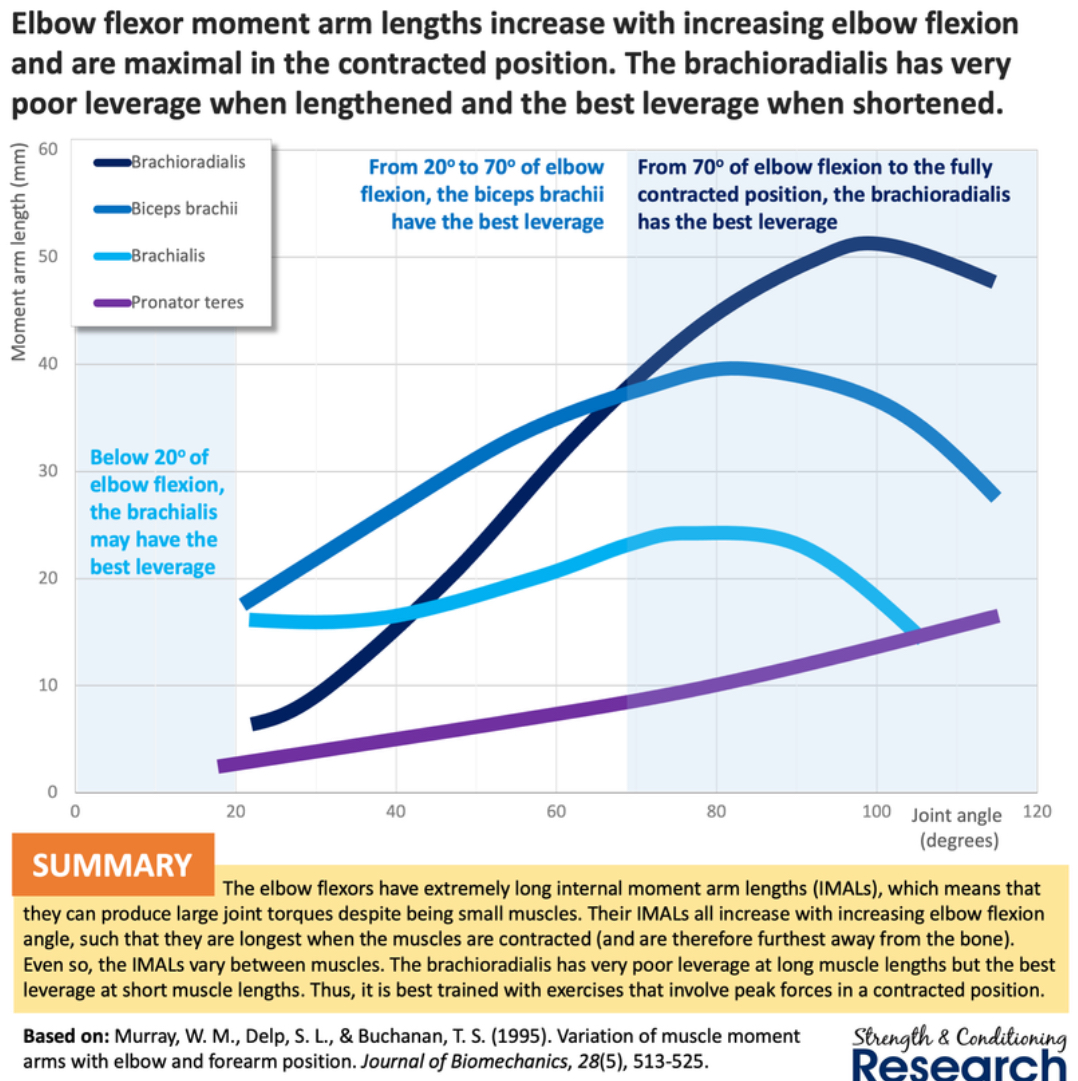
Keeping this study in mind
It’s best we have a curl with a descending resistance profile (meaning the movement is hardest at the bottom end easier at the top, as the bicep has best leverage there)
A good example would be:
- a preacher curl with the bench at 60 degrees
-a cable curl
DISCLAIMER!
A recent study suggests that having your humer in a flexed position biases the brachial is instead of the bicep

TRICEPS:
-a common myth about the triceps is that the long head of the triceps works in overhead positions. That is false, because of antagonist inhibition
Antagonist inhibition- when a muscle that crosses to joints (biarticular) it shortens at one head and lengthens at the others, making it so it cannot fully activate.
That’s what happens to the long head in an overhead position. It shortens at one head and lengthens at the other. So what exercises should you do?
-for the long head, a normal tricep extension with your arms by your side
-for the medial/lateral head, an overhead
extension
SHOULDERS:
the shoulder is divided in 3 main regions (realistically it has 7 heads but that doesn’t matter)
-Front delts: front raises won’t work them (it does but to a small extent) so what should you do?
•a partial front raise(between 0-30 degrees)
-Side Delts:
•a cable lateral raise with a cuff on your bicep is your best bet but it’s not that important, any lateral raise will do
- Rear delts:
•they already get hammered on your rows and whatnot but you can do a rear delts fly
CHAPTER 6
•Legs
1. Who cares about legs
2. Leg training is pretty simple
Here is what exercises you need:
-leg extensions for quads
-leg curls for hammies
-a hinge
-hip adductions
And maybe something for glutes if you’re into that
And that’s pretty much it. This was a pretty simplified version so I might’ve missed some things. I am writing this at 4 am so forgive me if there are any writing errors.
I’m glad to answer any questions
Also rep at least if you’re not going to read
This guide is based on the latest science, some things may change in the future.
CHAPTER 1.
•Why do muscles grow?
The main driver of muscle hypertrophy is no other than Mechanical tension. A really common myth is that the main driver of hypertrophy are microtears, which is in fact wrong. Muscle damage exists but that does not generate hypertrophy.
What is Mechanical Tension?
•well it’s not exactly a simple process but I will simplify it :
Mechanical tension = muscle fibers being pulled on while they’re working.
•When you lift a weight, your muscle fibers contract (shorten) while resisting the load
- The harder they have to contract (especially when the weight feels heavy or the reps get slow near failure), the more mechanical tension is created.
- That tension is the signal your body uses to say: “We need bigger, stronger muscle fibers to handle this in the future.”
- Over time, your muscles grow thicker (and sometimes longer) in response to that repeated tension.
CHAPTER 2.
•what is the best split?
There are 2 things that matter in a split :
-frequency: the amount of times you train
X muscle group per week
-Volume:how many sets you are doing per
Muscle group
I recommend a higher frequency lower volume split, why?
1. Muscle atrophy begins ~48 hours post workout

By training a muscle group every
48 hours you remain in that stimulus period, leaving less time for atrophy2. The most stimulating sets are the first 2

Having higher frequency essentially means you will benefit from the first sets more often than someone on a bro split (1x frequency) who benefits from them once a week
So? What’s the ,,best split”
There is no ,,best split” as long as you do a split
Like fbeod (full body everyother day) upper lower 3 times a week, anterior posterior or torso limbs as you will have good frequency
When doing a split with higher frequency you should do way lower volume as you need to recover ( more sets harder to recover because of muscle damage) preferably 2 sets for muscle group per sesh (if you can do 3 or 4 sets and recover do that)
How do you know if you are recovered?
if you progress that session that means you ve recovered from last ses ( experienced gym goers will progress less often [once every 1-2 weeks] while new gym goers might progress every session)
CHAPTER 3
• How to get a massive back
Getting a huge back only requires only 3 exercises

What are you looking at?
You need a back exercise for each of these planes
• Sagital-work the upper regions of the lattisimus dorsi (lats)
•Frontal-works the lombar region of the lats (lower lats)
• transverse-works your upper back and rear delts
For the sagital plane any chest supported row works, or if you want an isolation exercise you can try a keenan flap in the sagital plane

It consists of setting a bench near the cables and cuffing at the humerus (bone that’s under the bicep and tri) doing that removes your bicep and forearms from the exercises.
,,but won’t the exercise be better if it works more muscle groups?”
Answer is No, an isolation exercise will always be better for said muscle group because you will have better MUR( motor unit recruitment for that said muscle group)
Think about it this way, an exercise cannot be 100% biceps 100% lats 100%spinal erectors. It will be 70% this 70% that etc.
For the Frontal plane you can do:
-a wide grip pulldown ( make sure to not go all the way to the top, as the chest has best leverage there)

Lower pecs have best leverage between 180-120 degrees and 40-0 degrees. So that in the 120-40 degree range.
If you want an isolation exercise you can again, do a keenan flap except in the frontal plane this time

Make sure to put the cuff on your humerus
Lastly but not least, transverse plane:
You can either do:
-a row with your arms flared out
-a Kelso shrug
A Kelso shrug is just pure scapular retraction

Think about it like bringing your shoulder blades togheter with your arms straight. Try to do a wide grip row without moving your arms, that’s pretty much what a Kelso shrug is
Chapter 4
You’re overcomplicating brah
Your chest training
The chest’s main function is horizontal adduction, which is what you perform when doing bench press or pec deck(fly)
Horizontal adduction trains the whole pec, but it does have other functions such as shoulder flexion/ extension and frontal adduction between 40 degrees and 0.
You really need 1-2 exercises for your chest:
-A pec deck/pressing movement
-a low to high fly (shoulder flexion)
(Preferably done with dumbbells as they have an ascending resistance profile meaning they are hardest at the top half of the movement aka where upper chest has best leverage and least resistance at the bottom where front delts have best leverage)
WARNING: doing an incline/decline pressing movement won’t matter, as the angle of the bench doesn’t matter. What matters is performing the function of said muscle (upper pec shoulder flexion, lower pecs shoulder extension in sagital plane)
CHAPTER 5
•Big arms brah
Again, a really simple chapter
Biceps:

Keeping this study in mind
It’s best we have a curl with a descending resistance profile (meaning the movement is hardest at the bottom end easier at the top, as the bicep has best leverage there)
A good example would be:
- a preacher curl with the bench at 60 degrees
-a cable curl
DISCLAIMER!
A recent study suggests that having your humer in a flexed position biases the brachial is instead of the bicep

TRICEPS:
-a common myth about the triceps is that the long head of the triceps works in overhead positions. That is false, because of antagonist inhibition
Antagonist inhibition- when a muscle that crosses to joints (biarticular) it shortens at one head and lengthens at the others, making it so it cannot fully activate.
That’s what happens to the long head in an overhead position. It shortens at one head and lengthens at the other. So what exercises should you do?
-for the long head, a normal tricep extension with your arms by your side
-for the medial/lateral head, an overhead
extension
SHOULDERS:
the shoulder is divided in 3 main regions (realistically it has 7 heads but that doesn’t matter)
-Front delts: front raises won’t work them (it does but to a small extent) so what should you do?
•a partial front raise(between 0-30 degrees)
-Side Delts:
•a cable lateral raise with a cuff on your bicep is your best bet but it’s not that important, any lateral raise will do
- Rear delts:
•they already get hammered on your rows and whatnot but you can do a rear delts fly
CHAPTER 6
•Legs
1. Who cares about legs
2. Leg training is pretty simple
Here is what exercises you need:
-leg extensions for quads
-leg curls for hammies
-a hinge
-hip adductions
And maybe something for glutes if you’re into that
And that’s pretty much it. This was a pretty simplified version so I might’ve missed some things. I am writing this at 4 am so forgive me if there are any writing errors.
I’m glad to answer any questions
Also rep at least if you’re not going to read



